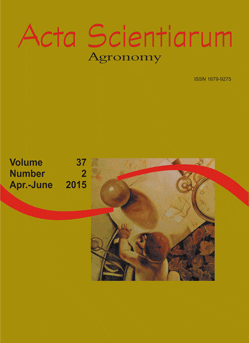<b>Hole diameters in pet bottles used for fruit fly capture
Resumo
Two experiments were conducted during the period from 31 January to 6 March 2012 in Santa Maria, Rio Grande do Sul State, Brazil to determine the efficiency of different hole diameters in PET trap bottles on pests in guava and persimmon orchards. In a randomised block design in a factorial scheme, we assessed the average number adults of Anastrepha fraterculus, Ceratitis capitata (Diptera: Tephitidae) and Zaprionus indianus (Diptera: Drosophilidae) infruits thatemerged in two situations (in the plant and on the soil); we also assessed the number of captured adults in trap bottlesunder two conditions, different hole diameters and different days after placement of the attractive solution. Smaller diameter sizescaptured more A. fraterculus, C. capitata and Z. indianusadults. The 1.0 cm diameter was the most efficient hole size in reducing the adult emergence of Tephritidae to Z. indianus, whereas the smallest diameter hole sizes, 0.6 and 0.8 cm, showed the highest efficiencies in controlling adult emergence in persimmon fruit and guava fruit.
Downloads
DECLARAÇÃO DE ORIGINALIDADE E DIREITOS AUTORAIS
Declaro que o presente artigo é original, não tendo sido submetido à publicação em qualquer outro periódico nacional ou internacional, quer seja em parte ou em sua totalidade.
Os direitos autorais pertencem exclusivamente aos autores. Os direitos de licenciamento utilizados pelo periódico é a licença Creative Commons Attribution 4.0 (CC BY 4.0): são permitidos o compartilhamento (cópia e distribuição do material em qualqer meio ou formato) e adaptação (remix, transformação e criação de material a partir do conteúdo assim licenciado para quaisquer fins, inclusive comerciais.
Recomenda-se a leitura desse link para maiores informações sobre o tema: fornecimento de créditos e referências de forma correta, entre outros detalhes cruciais para uso adequado do material licenciado.




















































